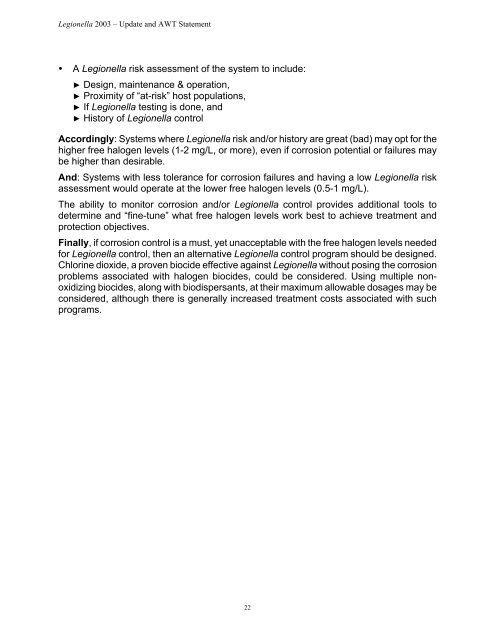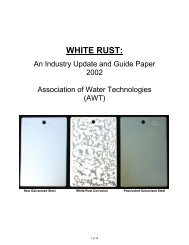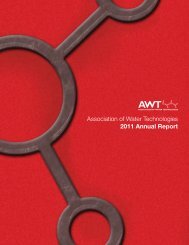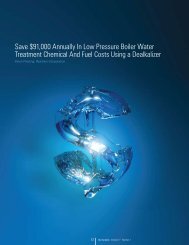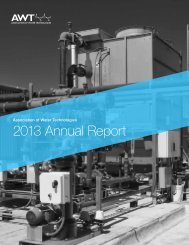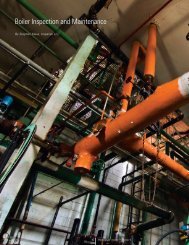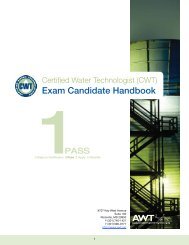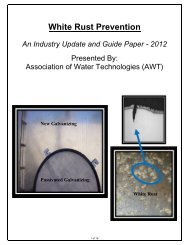Legionella: An Update and Statement by AWT - Association of Water ...
Legionella: An Update and Statement by AWT - Association of Water ...
Legionella: An Update and Statement by AWT - Association of Water ...
Create successful ePaper yourself
Turn your PDF publications into a flip-book with our unique Google optimized e-Paper software.
<strong>Legionella</strong> 2003 – <strong>Update</strong> <strong>and</strong> <strong>AWT</strong> <strong>Statement</strong><br />
• A <strong>Legionella</strong> risk assessment <strong>of</strong> the system to include:<br />
► Design, maintenance & operation,<br />
► Proximity <strong>of</strong> “at-risk” host populations,<br />
► If <strong>Legionella</strong> testing is done, <strong>and</strong><br />
► History <strong>of</strong> <strong>Legionella</strong> control<br />
Accordingly: Systems where <strong>Legionella</strong> risk <strong>and</strong>/or history are great (bad) may opt for the<br />
higher free halogen levels (1-2 mg/L, or more), even if corrosion potential or failures may<br />
be higher than desirable.<br />
<strong>An</strong>d: Systems with less tolerance for corrosion failures <strong>and</strong> having a low <strong>Legionella</strong> risk<br />
assessment would operate at the lower free halogen levels (0.5-1 mg/L).<br />
The ability to monitor corrosion <strong>and</strong>/or <strong>Legionella</strong> control provides additional tools to<br />
determine <strong>and</strong> “fine-tune” what free halogen levels work best to achieve treatment <strong>and</strong><br />
protection objectives.<br />
Finally, if corrosion control is a must, yet unacceptable with the free halogen levels needed<br />
for <strong>Legionella</strong> control, then an alternative <strong>Legionella</strong> control program should be designed.<br />
Chlorine dioxide, a proven biocide effective against <strong>Legionella</strong> without posing the corrosion<br />
problems associated with halogen biocides, could be considered. Using multiple nonoxidizing<br />
biocides, along with biodispersants, at their maximum allowable dosages may be<br />
considered, although there is generally increased treatment costs associated with such<br />
programs.<br />
22


